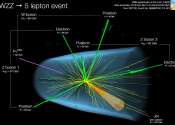Studying top quarks at high and not-so-high energies
CERN's Large Hadron Collider (LHC) is famous for colliding protons at world-record energies—but sometimes it pays to dial down the energy and see what happens under less extreme conditions. The LHC started operation in ...









